Political parties worldwide have increasingly acknowledged the need for inclusivity and diverse representation. However, it is not enough to merely have a roster of diverse candidates; the quest for diversity often falls short when parties neglect the systemic issues rooted in their organisational cultures.
Reevaluating internal structures and processes is paramount to reshaping party culture. Traditional power structures often perpetuate the status quo, marginalising certain groups and reinforcing the exclusionary nature of politics. Parties must be willing to deconstruct and rebuild these structures to ensure that power is distributed more equitably, allowing for diverse perspectives to influence decision-making at all levels.
The first step towards this goal is achieving a high level of awareness. Only by recognising that diversity is not a superficial checkbox but an integral component of a larger transformation can parties start to create truly inclusive environments. To address the systemic problems in play, parties must recognise that diversity is not a standalone solution but an integral part of a larger transformation of party culture.
Beyond election agendas: consistent commitment to diversity
Political parties often focus on diversity when it aligns with their election agendas, potentially neglecting the issue in other periods. To foster lasting change, parties must demonstrate a consistent commitment to diversity and inclusivity, not just at election time. This involves embedding inclusivity into the party’s core values, establishing diversity and inclusion committees, and ensuring that efforts are ongoing, not just reactive.
While diversity in candidate selection is crucial, true inclusivity goes beyond campaign posters. Parties must appoint employees from different backgrounds to key roles, including strategists, campaign managers, communication directors, and policy advisors. Diverse representation in these positions ensures that the perspectives of underrepresented groups are integrated into -decision-making processes and policy formulation.
Internal structural reforms and inclusion mechanisms
Quotas are one of the most common mechanisms for achieving diversity. Quotas set specific numerical targets for the representation of underrepresented groups, such as women, youth and ethnic minorities. While quotas have been successful in increasing representation, they are not without criticism.
Main challenge: Critics argue that quotas may prioritise numerical outcomes over merit, potentially leading to tokenism.
What to do: If most people in your party are against quotas, you can focus on creating an environment that encourages and supports the advancement of individuals from diverse backgrounds. This involves dismantling systemic barriers, providing mentorship programs, and ensuring equal opportunities for professional development. While this approach does not prescribe specific numerical targets, it emphasises fostering a culture where diversity is genuinely valued. If awareness amongst the leadership is high, they will make sure to have an inclusive approach even without adopting quotas.
Fostering inclusive leadership
Leadership plays a pivotal role in shaping party culture. To cultivate an inclusive environment, party leaders must lead by example, actively championing and prioritising the interests of underrepresented groups. This involves creating pathways for leadership roles, acknowledging and rectifying past discriminatory practices, and championing policies that promote equity.
Main challenge: Your voter base is conservative and may or may not respond well to a leader with a diverse background.
What to do: The diversity paradox is still evident in many political institutions where the outward appearance of diversity belies an underlying culture that remains resistant to inclusion. Use focus groups to address underlying concerns about diversity and inclusion. This could help find alternative and more creative approaches. A commitment to leadership training programs that address unconscious biases and foster inclusive decision-making processes is crucial.
Innovative employee profiles
Hiring a diversity and inclusion officer is always a good idea. This approach definitely signals a party’s genuine commitment to change and demonstrates an understanding that transformation requires collective effort.
Main challenge: Not all parties have equal budget and resources and may therefore prioritise another essential operational role to this one.
What to do: Collaboration with external organisations and stakeholders is integral to reshaping party culture. Establishing partnerships with diversity and inclusion experts, non-profit organisations, and community leaders can provide valuable insights and guidance. These partnerships can extend beyond election cycles to ensure sustained efforts in fostering inclusivity.
Addressing all aspects of diversity
A comprehensive approach to improving party culture must recognise the interconnected nature of various aspects of diversity. Parties often focus on gender and age, but neglect- other factors such as ethnicity, religion, sexual identity, disabilities and neurodiversity. This can perpetuate exclusion. Parties should acknowledge the unique challenges faced by individuals who belong to multiple marginalised groups and craft- policies that address these experiences.
Main challenge: Addressing multiple dimensions of diversity requires a nuanced approach, and parties may find it challenging to balance the diverse needs and experiences of individuals across various marginalised groups.
What to do: Parties can overcome the challenge by fostering empathy and dialogue. Keeping an open channel of communication is crucial for understanding one another’s needs. Encouraging respectful but assertive communication can facilitate constructive conversations. Holding regular forums, meetings, and diversity workshops, along with establishing advisory committees, comprising members from diverse backgrounds, will ensure diverse voices contribute to shaping inclusive party policies.
Transparency and diversity go hand-in-hand
Transparency is another key element in building a diverse and inclusive party culture. Openly acknowledging past shortcomings, setting measurable goals for improvement, and regularly communicating progress fosters accountability. This transparency not only builds trust with party members and the public but also encourages ongoing dialogue about the importance of inclusivity. Regular diversity reports that encompass multiple dimensions of diversity, such as race, ethnicity, gender, sexual orientation, neurodiversity, ability, and refugee status, can serve as benchmarks for progress.
In conclusion, while the pursuit of diverse candidates is a commendable step towards a more representative political landscape, true change extends beyond mere demographics. By addressing systemic issues within their organisational structures, fostering leadership commitment, and engaging in collaborative efforts, political parties can become beacons of progress, reflecting the diversity and richness of the societies they aim to represent.

